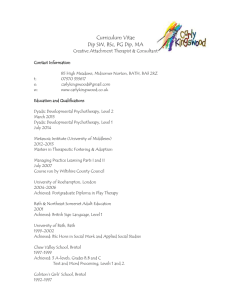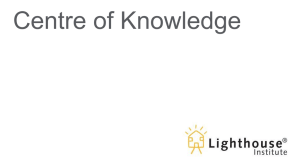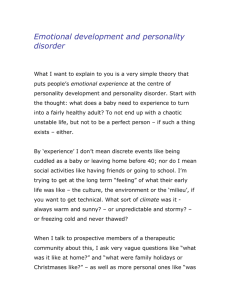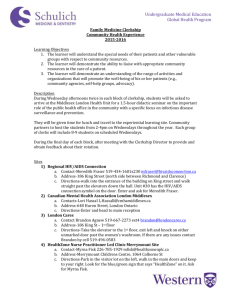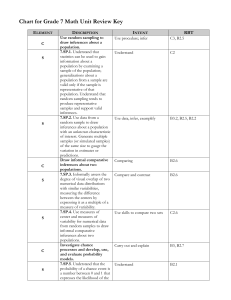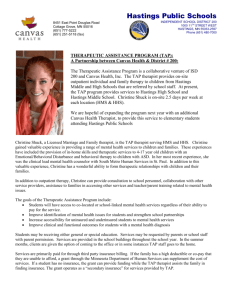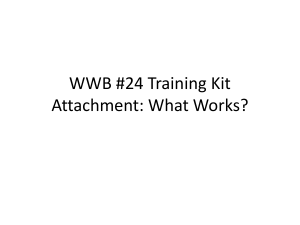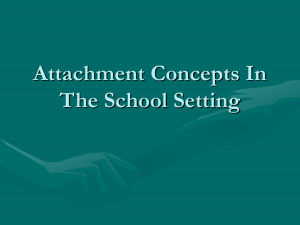Susan Abercromby-Therapeutic Access
advertisement
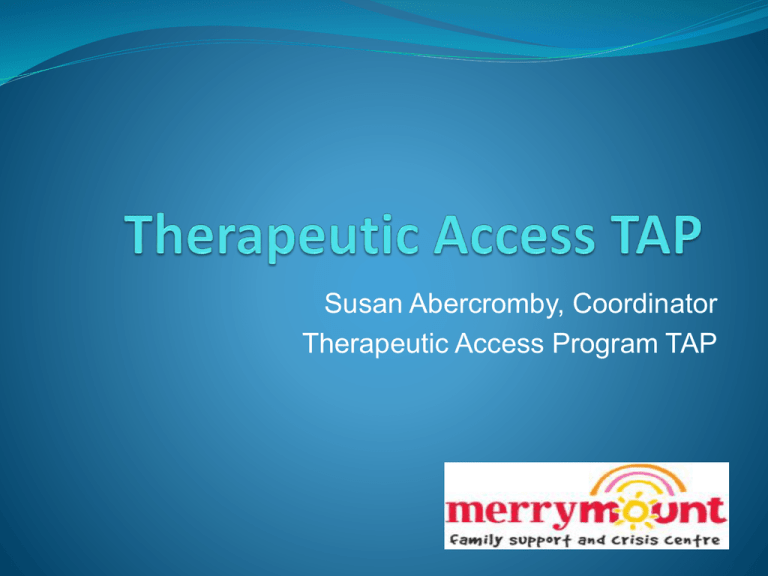
Susan Abercromby, Coordinator Therapeutic Access Program TAP What is Therapeutic Access (TAP)? A reintegration/reunification program designed to restore/repair the relationship between children and the estranged parent The program utilizes an attachment informed model emphasizing emotional safety of the children and parents. Contact between the estranged parent and the child(ren) is facilitated by an experienced Mental Health professional with knowledge of child development, separation and divorce, high conflict families, domestic violence, and parent/child conflict resolution. Therapeutic Access Con’t A family works with a Master’s level Clinician An intensive parenting experience for family members A safe and secure environment for children (birth to 18 years of age) Assistance to parents in developing ways to understand their child’s behaviour with an attachment focus A slow process…..may take several months What it is not.. Not a Parenting Capacity Assessment Not a Custody and Access Assessment Not an Assessment for Court It is a voluntary program Who Refers? Office of the Children’s Lawyer Family Law Lawyers Children’s Aid Society (as per Ref. Pkg.) Family Court What are the steps? Using an attachment framework, within the Adult Attachment and Circle of Security models each family will be supported in reestablishing connection The parents agree that it IS meeting the needs of the child(ren) to have healthy and meaningful relationships with both parents. When the relationship is supported and moving towards an emotionally safe connection the Therapeutic Access program is available for continued meetings, if required, or will refer elsewhere It is important to recognize the individual needs for families and each family member. Some children may only be able to connect on a limited basis and others may be emotionally able to begin regularly scheduled visitation over time. (Not a cookie-cutter framework) Protocol 1. Intake with each parent (custodial and non custodial) after appropriate referral process *see referral package as Appendix A 2. Follow up with each parent to set goals and begin contracting next steps 3. First meeting with the children will include the custodial parent. *Meet with children separately and as a family grouping, stressing emotional, physical and psychological safety. (Parents do not attend meetings together) Protocol con’t 4. Meet with both parents (separately) to set goals, furthering parents understanding of TAP guidelines, child development, attachment and their children's needs for safety, comfort and exploration. 5. Implement goals and visits- Each family may require a different schedule and numbers of visits * (not a cookie cutter formula). Plan with each family the number of visits that they are able and willing to commit to. 6. Assess and plan next steps for reintegration Typical Case Demographic Referred by the Office of the Children’s Lawyer and Family Court Couple married 10 + years Two children (ages 10 +) One parent has not seen the child for over 2 years Alleged /reported Domestic Violence Both parents working outside of the home (educated) One or both parties has legal representation Continuous litigation Alcohol or drug abuse, mental illness Contact Information Susan Abercromby M. Ed (Counselling) Coordinator sabercromby@merrymount.on.ca Merrymount Family Support and Crisis Centre (519) 434-6848 www.merrymount.on.ca
